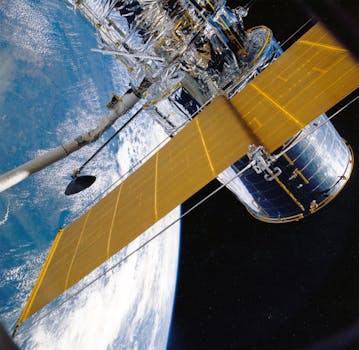GEO Satellites: Unlocking the Power of Geostationary Orbit

GEO Satellites: Unlocking the Power of Geostationary Orbit
GEO satellites, or Geostationary Orbit satellites, are a type of satellite that orbits the Earth at an altitude of approximately 36,000 kilometers, remaining stationary relative to a fixed point on the equator. This unique characteristic allows GEO satellites to maintain a constant view of a specific region, making them ideal for a variety of applications, including telecommunications, weather forecasting, and navigation. In this article, we will delve into the world of GEO satellites, exploring their history, benefits, and applications, as well as the challenges and future developments in the field.
History of GEO Satellites
The concept of GEO satellites was first proposed by science fiction writer Arthur C. Clarke in 1945, who suggested that a satellite in geostationary orbit could be used to transmit signals across the globe. The first GEO satellite, Syncom 2, was launched in 1963 by NASA, and it paved the way for the development of modern satellite communications. Since then, hundreds of GEO satellites have been launched, providing a wide range of services, including television broadcasting, telecommunications, and data transmission.
Benefits and Applications of GEO Satellites
GEO satellites offer several benefits and applications, including: GEO satellites provide a wide range of benefits, including global coverage, high-gain antennas, and a high signal-to-noise ratio. These characteristics make them ideal for telecommunications, allowing for high-speed data transmission and voice communications. GEO satellites are also used for television broadcasting, providing a wide range of channels and programming to audiences around the world. Weather forecasting is another critical application of GEO satellites, as they provide high-resolution images of the Earth’s atmosphere, allowing meteorologists to track weather patterns and predict storms. Navigation is also a key application, with GEO satellites providing location information and timing signals for GPS and other navigation systems.
Challenges and Future Developments
Despite the many benefits and applications of GEO satellites, there are also several challenges and limitations to their use. One of the main challenges is the risk of satellite collisions, which can cause significant damage and disruption to satellite services. Additionally, the increasing amount of space debris in geostationary orbit poses a significant threat to the long-term sustainability of satellite communications. To address these challenges, satellite operators and manufacturers are developing new technologies and strategies, such as advanced propulsion systems and debris removal systems. Additionally, there is a growing trend towards the use of smaller, more agile satellites, which can be launched at a lower cost and provide more flexible and responsive services.
Conclusion
In conclusion, GEO satellites play a vital role in modern telecommunications, offering a wide range of benefits and applications. From their early beginnings to the present day, GEO satellites have come a long way, providing global coverage, high-gain antennas, and a high signal-to-noise ratio. As the demand for satellite communications continues to grow, it is likely that GEO satellites will remain a critical component of the global telecommunications infrastructure, shaping the future of satellite communications and beyond.




